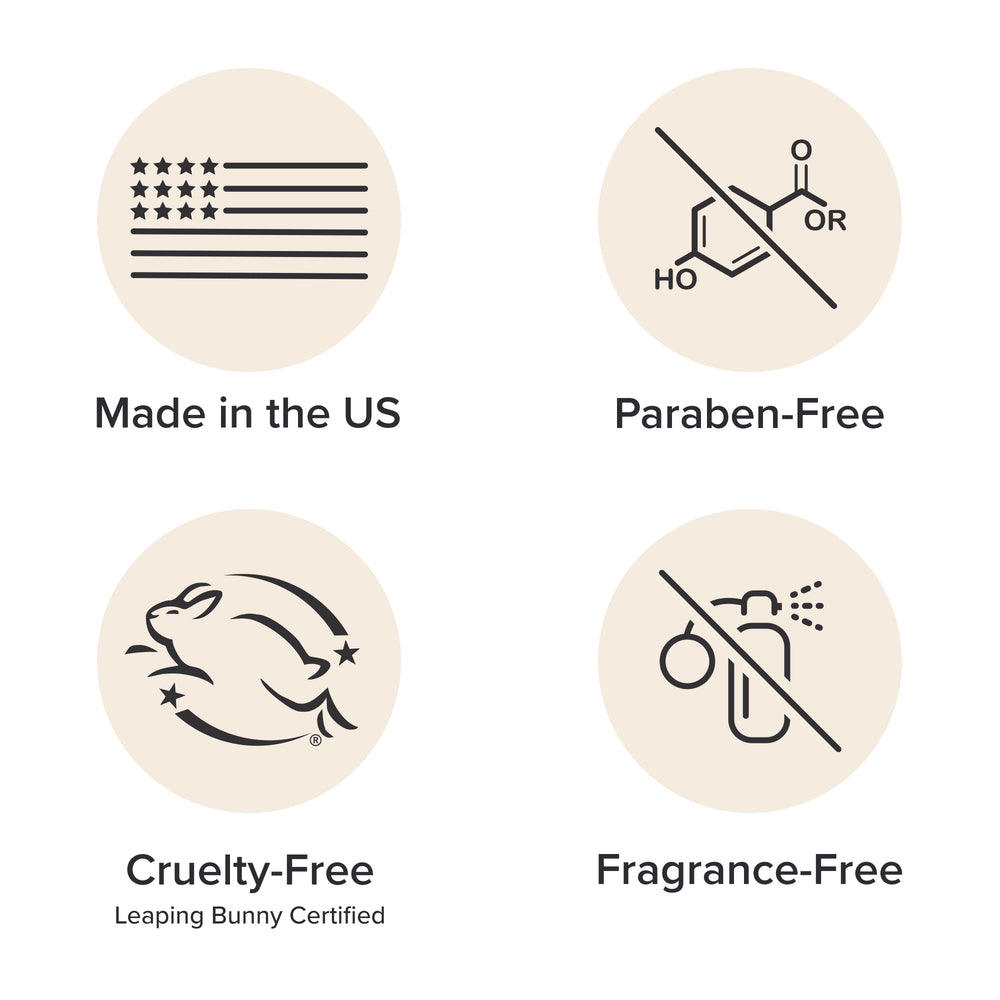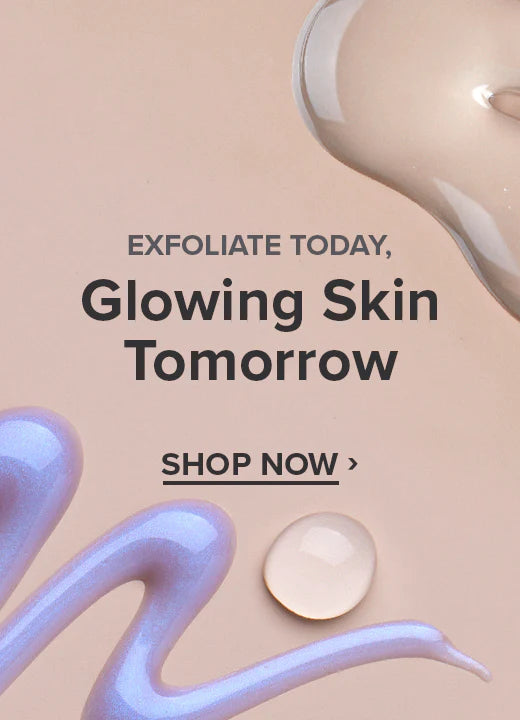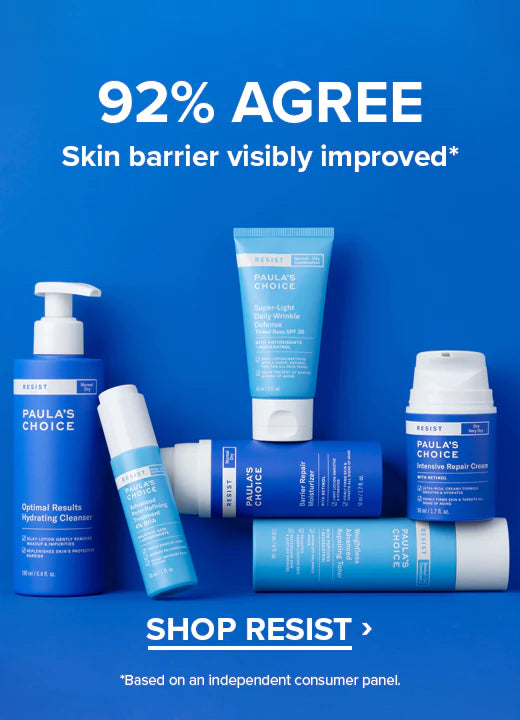How to Get Rid of Red Spots on Face
Written by: Desiree Stordahl
Medically Reviewed by: Corey L. Hartman MD Board-Certified Dermatologist
Updated on: 1/22/2025
In this article:
Why is my face red?
Acne
What causes acne?
Eczema
Rosacea
Perioral dermatitis
Keratosis pilaris
Allergic reactions
What causes allergic reactions?
How do you get rid of redness on face?
Skin redness is a real pain. First, there’s the arduous task of identifying its causes, of which there are many. A red flush can appear when temperatures drop or an ingredient irritates skin, red spots can pop up alongside breakouts or this color shift can appear as a symptom of an underlying skin condition. Skin’s a sensitive organ!
Secondly, there’s the fact that learning how to calm irritated skin takes trial and error.
Luckily, we’re here to walk you through possible red skin causes, how to reduce facial redness and what to avoid to deter future bouts of irritation.
Why is my face red?
While acne is a common cause of red spots and bumps, it’s important to distinguish between pimples and other types of facial redness to make sure you’re getting the right skin care treatment. As we touched on above, skin redness on the face can stem from a plethora of causes. A few are....
- Acne, bumps and breakouts (1)
- Skin conditions, like rosacea and eczema
- Unwanted reactions to skin care ingredients
- Facial flushing after exercise
- Exposure to warm or cold temperatures (2)
- Sunburn
Acne
Acne-related red spots stem from active pimples, as well as post-blemish marks. On lighter skin tones, these appear pinkish to reddish in hue, but on deeper skin tones these marks typically appear tan or dark brown (3). Either way, the redness or other discoloration that you see is a result of skin’s response to the acne-induced inflammation.
What causes acne?
The causes of acne are multifactorial, but basically what happens is an overabundance of sebum (oil) builds up and becomes trapped within the pore where it mixes with dead skin cells and follicular debris in the pore lining, forming a thick, waxy clog. This congestion creates the perfect environment for acne-triggering bacteria to flourish, resulting in a pimple. We now know that this all occurs in an environment of inflammation that acts as the background for all acne breakouts.
Other factors that can make acne-prone skin worse include: stress, using products that aren’t right for your skin type and/or contain irritating ingredients, certain dietary sensitivities, not properly and routinely cleansing skin (i.e., falling asleep with your makeup/sunscreen on) and hormonal fluctuations (4,5).
Eczema
Eczema looks and feels different than acne and is triggered by a different set of factors. With lighter skin tones, eczema-related redness appears in clusters/patches. On deeper skin tones, it presents as violet to gray or dark brown, often with a bumpy texture.
Regardless of skin color, itch is a major symptom of eczema (6). If you suspect you may have this condition, it’s imperative to see a dermatologist for diagnosis and to discuss solutions. Most eczema cases require a combination of over-the-counter and prescription topical products.
Rosacea
Redness related to rosacea presents differently, typically appearing as flushing or blushing that will be most apparent on fair to medium skin tones. This flushing usually appears on the cheeks, nose, chin and forehead but can appear elsewhere (7). Outside of redness, you can also spot rosacea due to small bumps that are not centered on hair follicles and a burning sensation.
Rosacea is known to have “triggers” which cause the condition to appear or look worse (flare). These triggers include extreme weather, stress, exercise, alcohol, hot beverages, spicy foods, indoor heat, humidity, hot baths and sun exposure.
Note that those with darker skin won’t see rosacea-related redness but will instead see patchy darkening accompanied by a warm, sensitized feeling that may be persistent or may come and go, responding only to certain factors, such as heat. This is another condition that must be diagnosed and discussed with a physician for treatment.
As with eczema, getting rosacea under control takes a mix of super gentle over-the-counter skin care products and prescription options. “There is now a new world of non-steroidal, systemic medications that can manage this chronic condition,” says board-certified dermatologist Dr. Corey L. Hartman.
Perioral dermatitis
Perioral dermatitis is characterized by rash-like eruptions around the mouth that are often mistaken for acne. On light skin, perioral dermatitis has a noticeable pink to red color, whereas on deeper skin tones it tends to look hyperpigmented or reddish-brown (8). This can be caused by a variety of factors such as misuse of topical steroid creams, skin irritation from toothpaste, and possibly even diet (though more research is needed to prove that theory) (8,9). Seek proper diagnosis and treatment protocol from a physician, and in the meantime avoid putting anything around the mouth area that may irritate skin.
Keratosis pilaris
Areas of small, reddish, hard, bumps on arms, butt and legs are the hallmark of a skin problem often referred to as “chicken skin” or "strawberry skin". According to Dr. Hartman, “These bumps form due to retention of keratin in hair follicles, lack of exfoliation and an impaired skin barrier leading to dryness.”
In darker skin tones, these bumps are various intensities of brown instead of pink to red. While the bumps are harmless, there are steps you can take to reduce their appearance.
Allergic reactions
Allergic reactions on light to medium skin may look like the red bumps you see with acne but are more commonly smaller red papules with a “prickly” appearance. Those with darker skin tones will potentially see localized discoloration and a bumpy texture, accompanied by an itchy sensation. Sometimes these types of reactions happen suddenly after exposure; other times they take longer to show up.
In addition to the redness, allergic reactions may also be accompanied by uncomfortable-feeling, sensitized skin. The allergic reaction may occur only in areas that came into contact with the allergen or may appear elsewhere on the body. The dermatology term is allergic contact dermatitis.
What causes allergic reactions?
The causes of allergic reactions vary and can be highly individual. You could experience an allergy to a specific ingredient or combination of ingredients in your skin care product (fragrance ingredients are common triggers).
It’s also possible to develop an allergy to products you’ve used for years without issue. This is due to how skin changes over time, including from environmental damage, certain health conditions and menopause.
Seeing an allergist or dermatologist can be helpful to pinpoint what you’re allergic to and prevent a future reaction.
How do you get rid of redness on face?
Want to minimize the redness that comes with acne as fast as possible? We’ve been there, too and have a few “instant relief” hacks up our sleeve that can help. Here’s your quick and easy guide to soothing skin and toning down acne redness on the spot.
Hack 1: Calm skin with soothing ingredients
A pimple is red because it’s irritated, so it stands to reason that anything you can do to soothe skin is going to help visibly minimize the redness.
Our trick? Spot-treat the area with an acne redness treatment containing salicylic acid, which research shows has soothing, anti-inflammatory, anti-redness properties that can help pimples go down. Then follow up with a redness-reducing serum formula featuring skin-calming extracts such as oat, willow herb, and licorice (10). This combination can bring near-instant redness relief.
Here’s a quick list of some of our favorite redness-reducing and soothing ingredients:
- Allantoin
- Beta-glucan
- Centella asiatica
- Licorice
- Oat extract
- Panthenol
- Salicylic acid, AKA beta hydroxy acid (BHA)
- Willow herb
- Green tea
- Oligosaccharides
- Niacinamide
- Azelaic acid
Hack 2: Get the red out with Visine®
Really short on time? Saturate a cotton swab with Visine® or other “redness-relieving” eye drops (not artificial tears or eye drops for dry eyes) and hold the swab on the affected area for 30 seconds or so.
Visine or other similar redness relieving eye drops contain ingredients that help to constrict blood vessels. It’s an off-label, temporary solution, but anecdotal evidence shows that it works for some people (including a few of our Paula’s Choice staffers who swear by it when they’re in a pinch). If you already have Visine® or something similar at home, it’s worth a try! Short-term use is unlikely to irritate skin.
Hack 3: Color correct and conceal
You can also try neutralizing reddened blemishes with a well-formulated green color corrector product. This might sound like an interesting piece of advice, but according to color theory green helps counteract red tones. It’s finding the right green for your redness that can be tricky, as many are too pastel and don’t pair well with a skin-tone matching foundation. Still, it's worth experimenting with to see if you like the results.
Some tips: Make sure to apply a thin layer of the green colored corrector, as too much can leave you looking like the Wicked Witch or someone who's always nauseous. You’ll need to top it off with a medium-coverage foundation and/or concealer for a natural skin tone effect, but together, this duo can cancel the red right out.
Hack 4: Cortisone shot
If you have a pimple emergency before a big event, see a dermatologist for an intralesional cortisone shot (11). The diluted steroid shot will help pimples vanish within 24-48 hours!
Above all else, make sure you treat your skin as gently as possible, by using fragrance- and irritant-free products that won’t make redness worse.
Learn more about skin redness.
Learn more about our editorial mission.
References for this information:
- American Family Physician, October 2019, pages 475-484
- Deutsches Ärzteblatt, August 2019, pages 537-544
- Journal of Clinical and Aesthetic Dermatology, March 2021, pages S20–S22
- American Journal of Clinical Dermatology, January 2021, pages 55-65
- Clinical Biochemistry, September 2011, pages 1,035-1,040
- Cochrane Database of Systematic Reviews, February 2017, pages 1–360
- American Journal of Clinical Dermatology, March 2021, pages 457-465
- Dermatology, September 2013, ePublication
- Journal der Deutschen Dermatologischen Gesellschaft, November 2021, pages 1-18
- Fitoterapia, October 2013, pages 160–184
- Journal of Clinical and Aesthetic Dermatology, December 2020, pages 41-43





